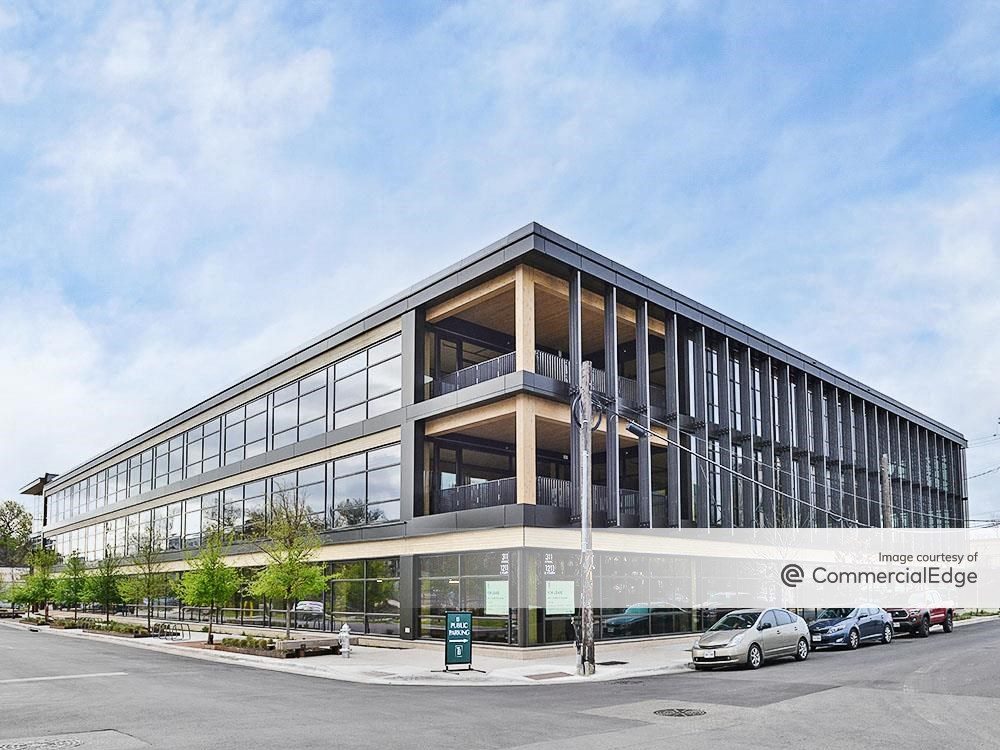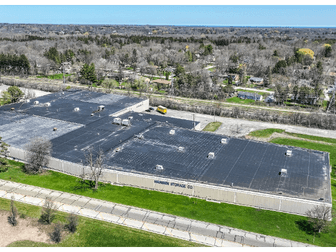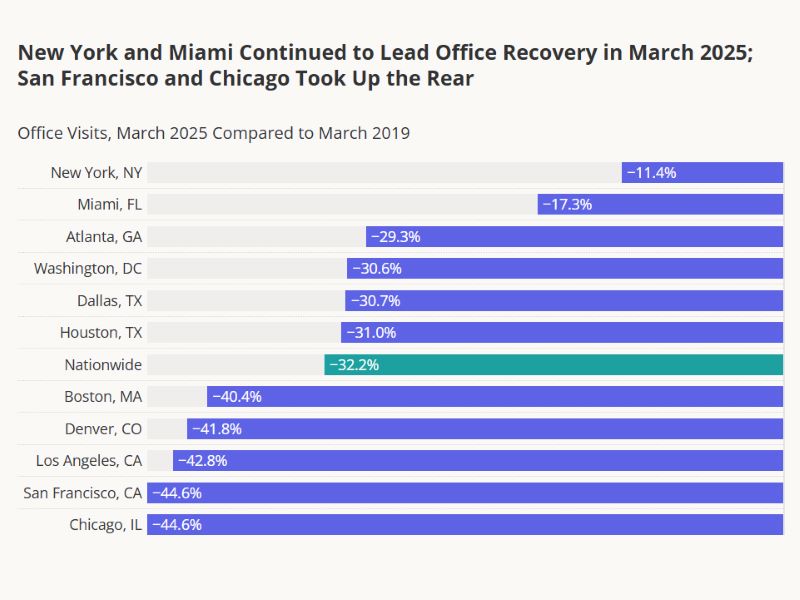Net Zero in CRE Is Easier Said Than Done
More companies are making pledges, while being careful about what they promise.
“We now have some investors asking specifically about the carbon footprint and carbon emissions of individual assets in our funds,” said Peter Epping, global head of ESG, Hines. “They want to understand how a fund is dealing with its carbon footprint and how quickly it will be reduced over time and brought to net zero.”
Just a few years ago, commercial real estate companies that set net zero carbon dioxide emissions goals were singled out for their proactive regard for the environment. Today, however, given the escalating climate crisis and the hyper-focus on ESG, net zero goalsetting is becoming the norm, and the pressure to show verifiable progress and to expand the scopes of reduction targets is mounting.

Hines’ 555 Greenwich in New York was designed to reduce energy emissions from a traditional Class A building by 45 percent and to align with a 1.5-degree Celsius Carbon Risk Real Estate Monitor pathway and the goal of a carbon-neutral New York by 2050. The design process and construction practices implemented at Hines’ 555 Greenwich can serve as a roadmap for climate-conscious building in New York City and beyond by integrating geothermal piles, thermally active radiant slabs, a dedicated outdoor air system, and a fully electrified heating system. Image courtesy of Hines
Net zero definitions and pathways within commercial real estate vary since not all companies are prescribing to the same net zero standard. A report released earlier this year by MSCI “Breaking Down Real Estate Net Zero Targets,” identified four different commitments that real estate investment and service companies worldwide have officially aligned with: the 1.5 degree Celsius Science-Based Targets Initiative, as well as a 2 degree Celsius commitment; Greenprint’s Center for Building Performance’s Net-Zero carbon operations commitment; The Better Building’s Partnership Climate Commitment; and the World Green Building Council’s Net Zero Carbon Buildings Commitment.
Add to that list the International Future Institute’s Zero Carbon Certification, and the USGBC’s LEED Zero, a complement to LEED certification that recognizes buildings that reach net zero targets in carbon, energy, water and waste. LEED Zero Carbon recognizes net zero carbon emissions (from energy consumption through carbon emissions avoided or offset over a period of 12 months.
Due to the variety of pathways and investors’ eagerness to sniff out “greenwashing,” net zero commitments are also under greater scrutiny.
“To understand where a CRE company is on its path to net zero, or decarbonizing, means looking further at the company’s projections, its planned improvements to reduce GHGs, what it is including in its scope and whether its investments are in line with that plan,” said Elizabeth Beardsley, senior policy counsel, U.S. Green Building Council.

Empire State Realty Trust has been purchasing 100 percent green-e certified REC’s for the Empire State Building since 2011 and 100 percent renewable wind power for its entire commercial portfolio since 2021. ESRT Trust has partnered with 18 Reserves and ACT to support the preservation of biodiverse forest ecosystem to offset 100 percent of non-electric fossil fuel usage. Image courtesy of Empire State Realty Trust
Limitations of Scope
Broadly, net zero means balancing out the carbon emissions produced with the carbon emissions removed or avoided, but the commitments CRE companies have signed on to vary somewhat in terms of timelines, emissions scopes they include, and how much offsetting they allow–if they allow offsetting.
Net zero is a concept that has drawn criticism from some in the scientific community because it doesn’t assume that an entity will lower its emissions. They just need to balance them out. Offsetting is also controversial for some scientists.
Most formal net zero commitments for U.S. property companies to date have covered operational emissions or net zero energy—Scope 1 and 2 emissions. Emissions across the value chain or Scope 3 emissions are more challenging to track and tackle, though real estate companies are working hard to get a handle on tenant-controlled emissions and, along with the AEC community, discovering new ways to reduce or eliminate carbon in construction materials and minimize waste,
But companies may soon need to expand the breadth of their net zero commitments. The SEC’s proposed climate disclosure rule would require public companies of a certain size to report on their climate change risks, include Scope 1, 2 and 3 emissions, of which there are 15 categories, according to GHG Protocol. If passed these rules would undoubtedly have an impact on not just REITs and public real estate companies but the industry as a whole.
According to MSCI, targets set by property funds should be “comprehensive,” including scope 1, 2 and 3 emissions and development activities; “ambitious,” pursuing absolute short- and long-term reductions in line with science-based targets and “feasible,” with demonstrated progress toward goals and a supported business strategy.
In addition to worsening climate and increased investor demand, rising levels of building emissions regulations on the state and local levels also prompting property owners to make net zero pledges. Earlier this year, the Biden Administration announced that 33 states and cities have committed to pass Building Performance Standards legislation or policies by Earth Day 2024, representing 20 percent of U.S. buildings.
The Need for Speed

The team at aer, a Hines property in Munich, is addressing operational and embodied carbon through refurbishments. Hines intends to transform an existing structure into an efficient, high-quality building by using timber and hybrid construction to reduce embodied carbon. Hines is utilizing geothermal energy and ecological electricity to optimize operations and implementing interior greenery to improve air quality and occupant well-being at aer, a building located in Munich. Image courtesy of Hines
The Intergovernmental Panel on Climate Change finds the planet has only 12 years to limit temperature rises to under 1.5 degrees Celsius. The IPPC report suggests that 61 percent of global building emissions could be reduced by 2050, with the largest share of mitigation potential coming from new buildings in developing countries, and the renovation of existing buildings in developed countries.
“It’s encouraging to see so many CRE companies setting zero emissions goals, but we need to act with greater urgency,” said Ralph DiNola, CEO of New Buildings Institute. “If they set a 2040 or 2050 goal, we need to ask: What are you doing this year, next year, and in the next decade to get on the right path?”
Hines has set a target of net-zero operational carbon in its building portfolio by 2040. The firm’s aer property in Munich is addressing operational and embodied carbon through refurbishments. Hines intends to transform an existing structure into an efficient, high-quality building by using timber and hybrid construction to reduce embodied carbon. The company is also utilizing geothermal energy and ecological electricity to optimize operations and implementing interior greenery to improve air quality and tenant well-being.
Empire State Realty Trust was an early adopter of net zero strategies. The company began reducing its emissions back in 2007 and proved the business case for investing in deep energy retrofits, reducing emissions at the Empire State Building by 54 percent and across its entire portfolio by 43 percent since then. The firm adopted a definition of net zero to mean an 80 percent reduction in emissions from its commercial building operations, with the remaining 20 percent of emissions offset by proven strategies.
The biggest challenge to the industry’s progress toward net zero is education, notes Dana Robbins Schneider, senior vice president & director of Energy, Sustainability & ESG at Empire State Realty Trust. “Design professionals, equipment providers, contractors and owners must become more knowledgeable about the facts of what is possible technically and economically. They must stop repeating the mistakes of the past and learn about the technologies and paybacks that exist.”












You must be logged in to post a comment.